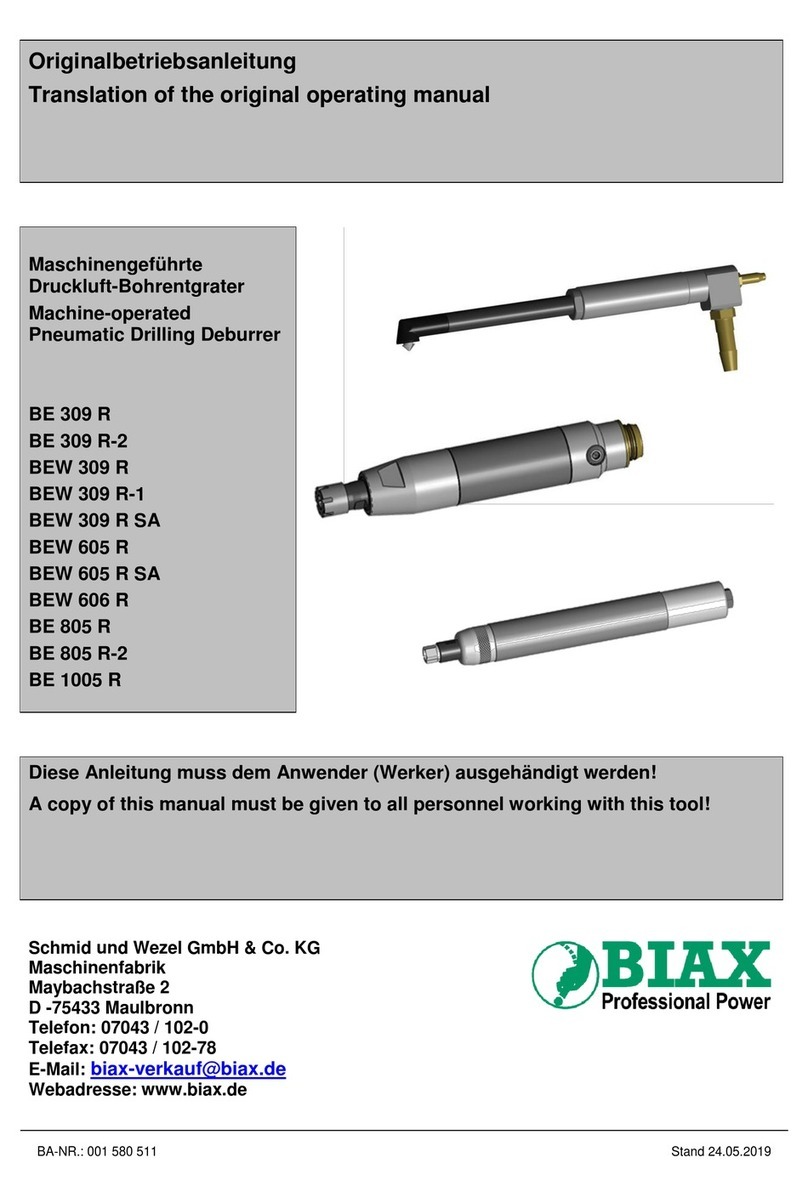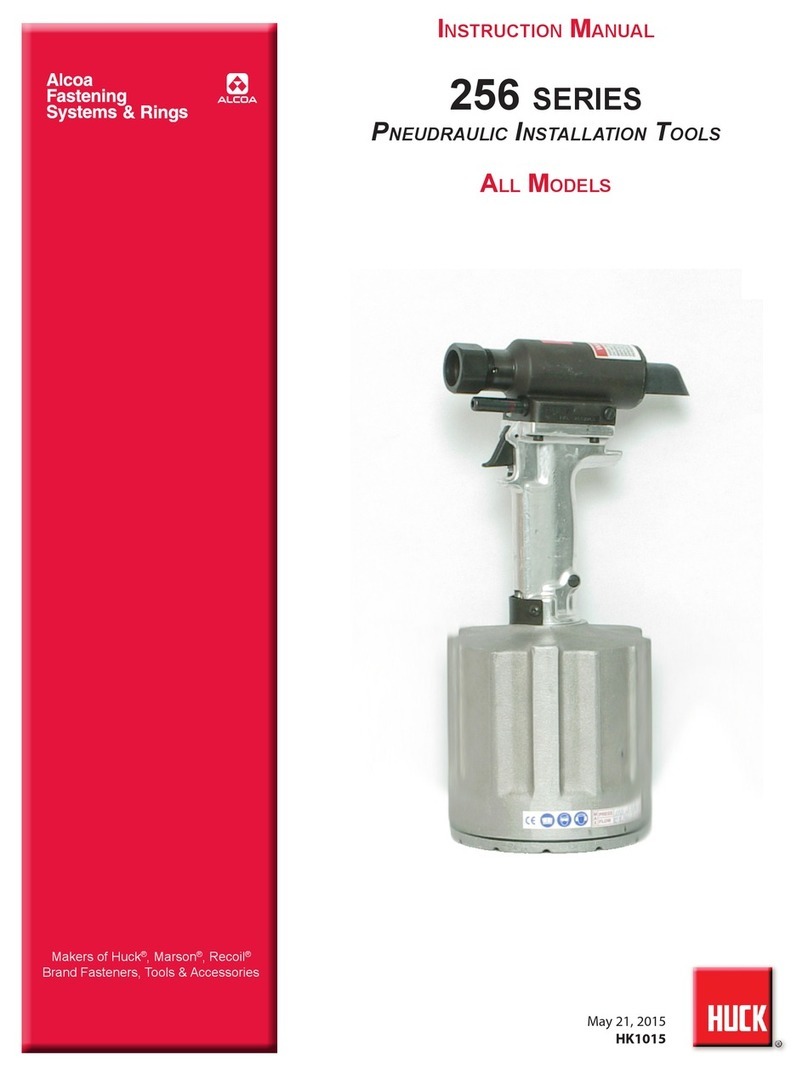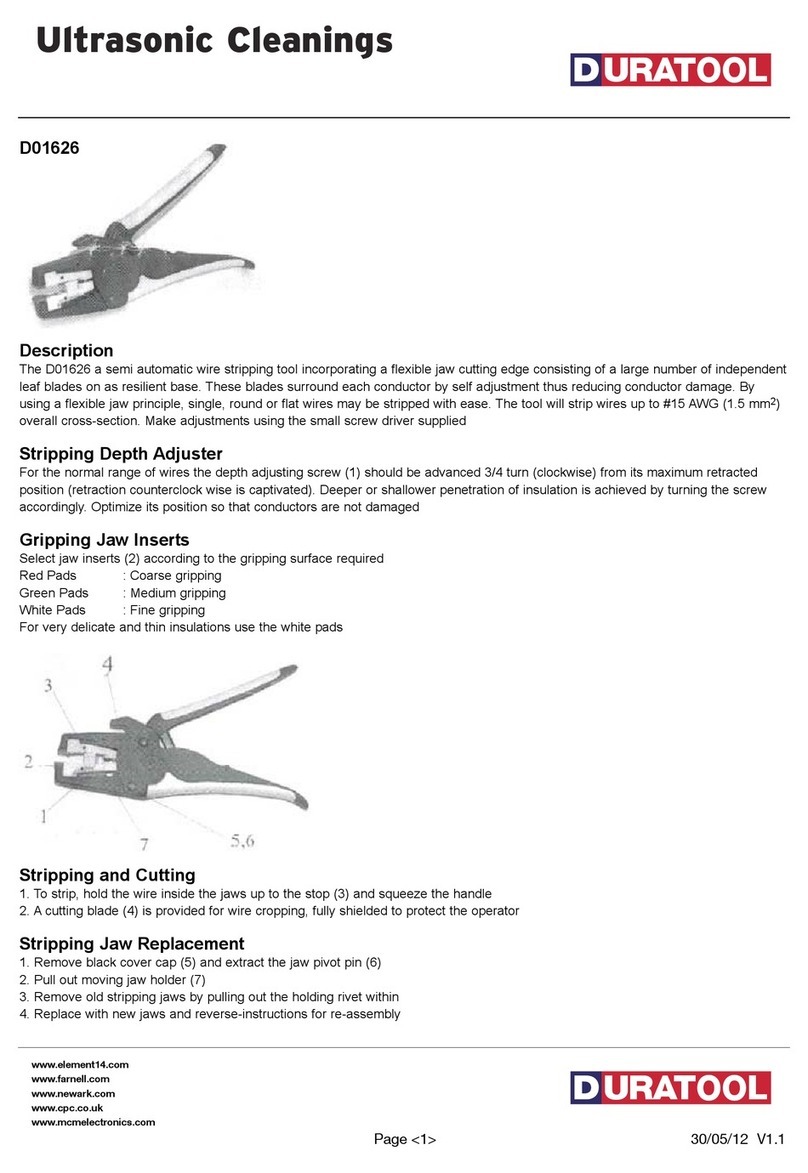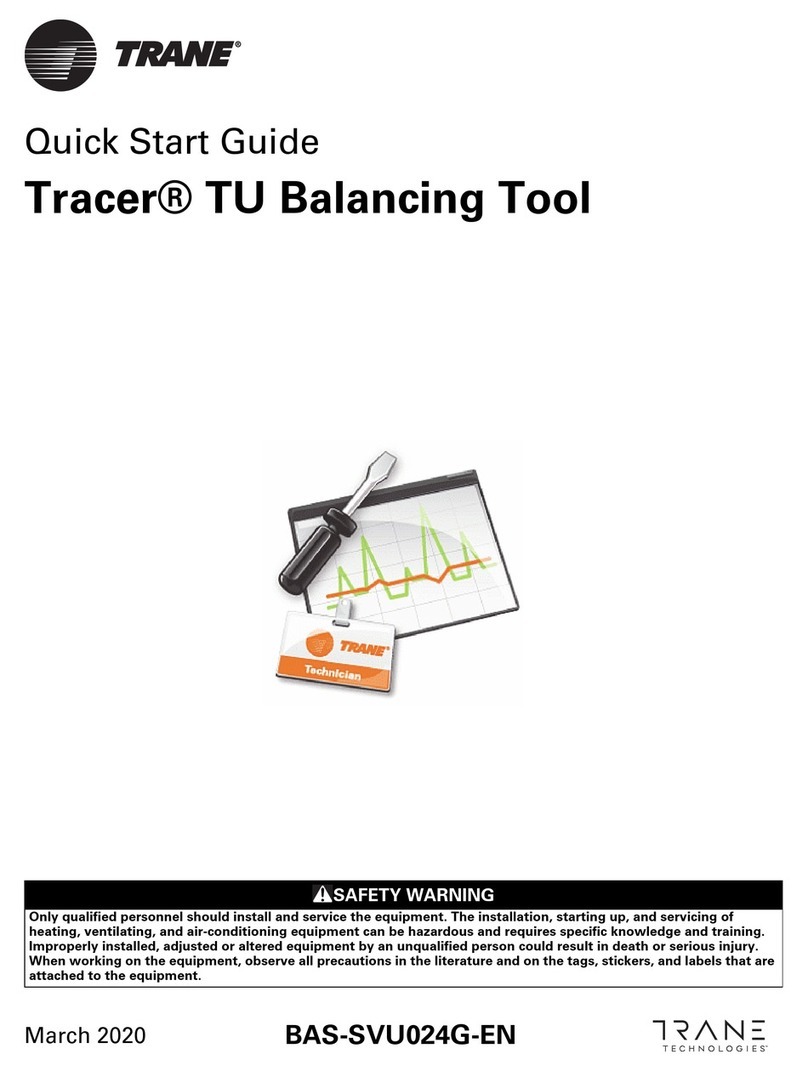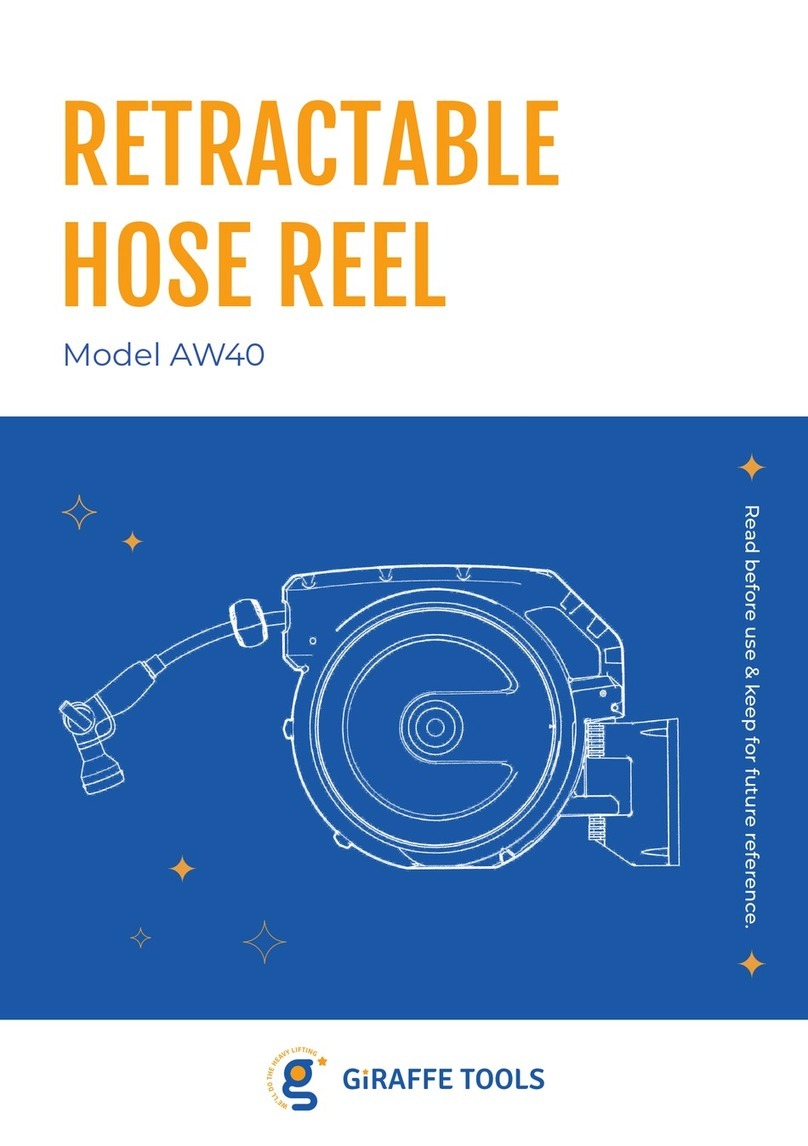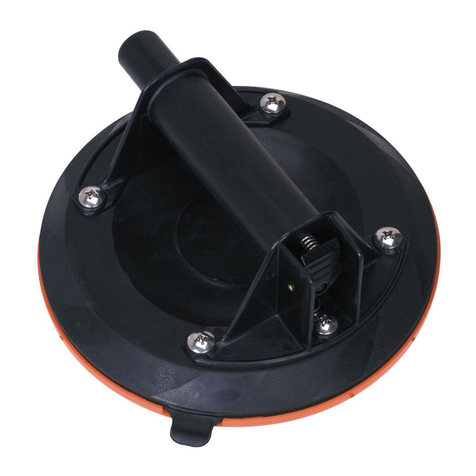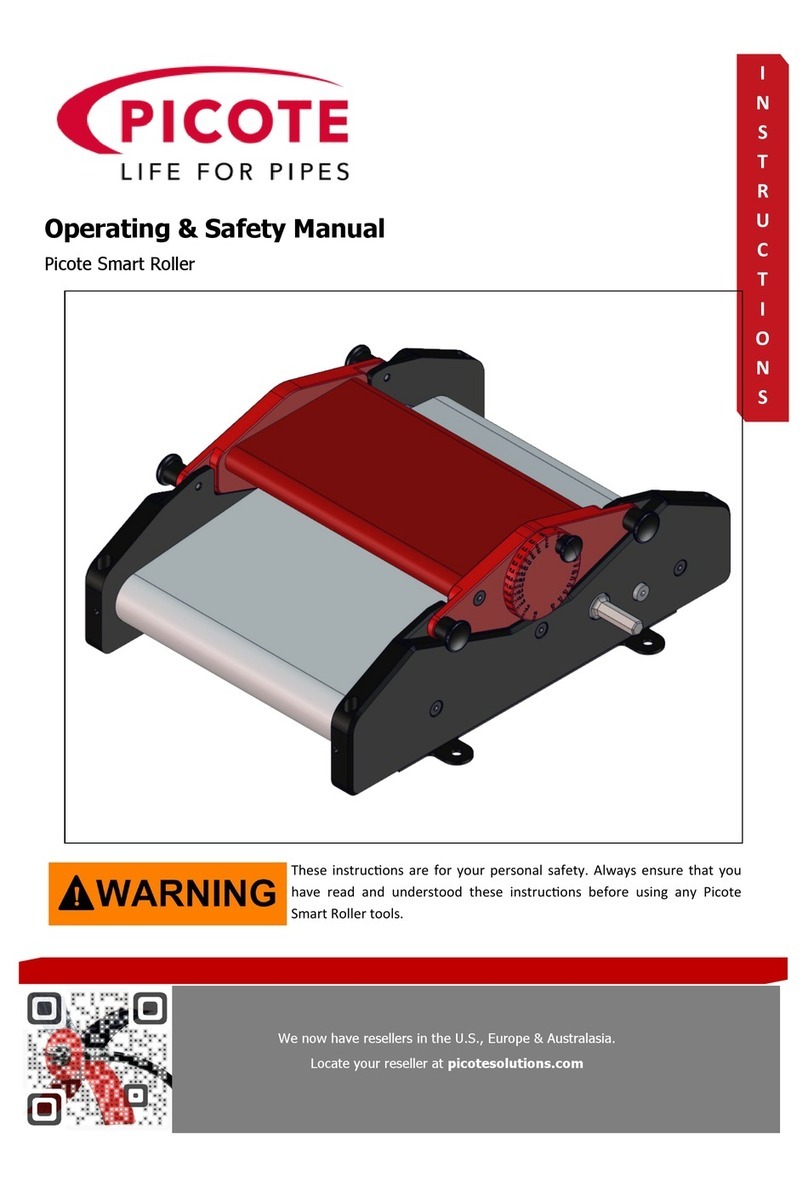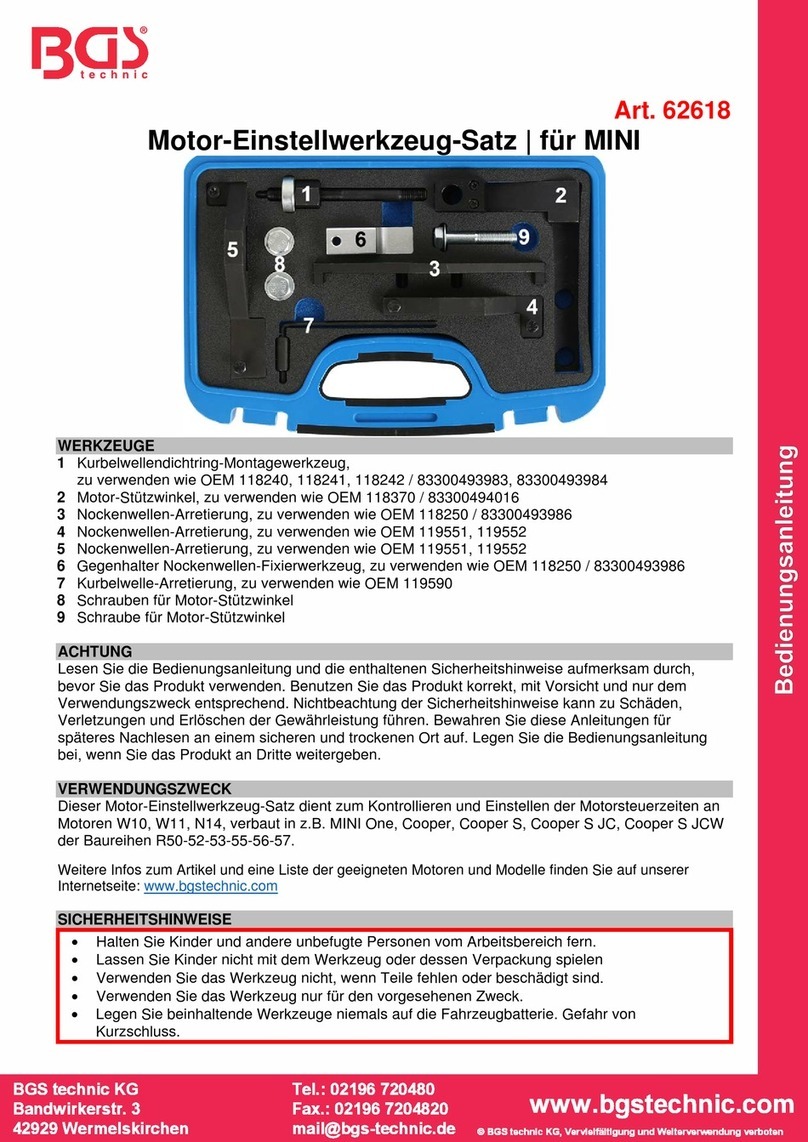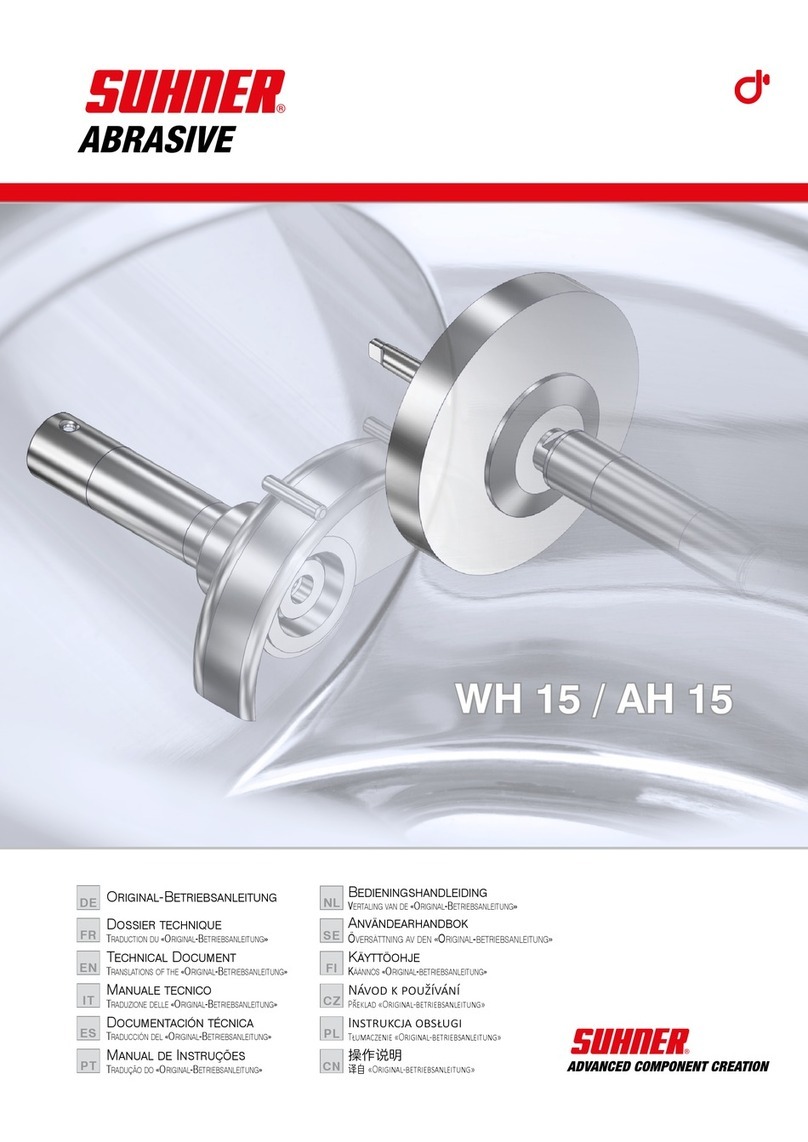BIAX FLV 1-20 Operational manual

BA-NR.: 003 013 309 Index: 02 Stand 19.09.2022
Originalbetriebsanleitung
Translation of the original operating manual
Typ FLV 1-20
Typ FLV 4-9
Diese Anleitung muss dem Anwender (Werker) ausgehändigt werden!
A copy of this manual must be given to all personel working with this tool!
La présente notice est à remettre à l'utilisateur (ouvrier)!
Il presente manuale deve essere consegnato personalmente all’utente (gestore)!
BIAX-MASCHINEN GmbH
Tonwerkstrasse 10
CH- 8240 Thayngen
Telefon: +41 (0)52 674 06 60
E-Mail: info@biax.ch
www.biax-germany.de

BA-NR.: 003 013 309 Index: 02 Stand 19.09.2022
D Betriebsanleitung für Druckluft Feiler 1-5
GB Operating instructions for pneumatic file 6-10
FLV 1-20
FLV 4-9

Betriebsanleitung für Druckluft-Feiler
1
D
Technische Daten
Typ
Betriebsdruck
Hubzahl
Max.
Werkzeuggewicht
Werkzeug
-
durchmesser
Hub
Geräuschpegel
(EN ISO 15744)
Gewicht
Länge
Vibrationswert
(EN ISO 28972
-8)
Luftverbrauch
Anschlussgewinde
bar
min
-1
g mm mm dB(A)
g mm m/s
2
L/min
Zoll
FLV 1-20
Art.Nr.150 322 780
6 17000
25 3 0,8 63 260
181 <2,5 80 G1/4"
FLV 4-9
Art.Nr.150 322 785
6 9000 12 3 4 66 260
181 <2,5 80 G1/4"
Lieferumfang
Typ
Sechskant-Schlüssel 2 mm
Originalbetriebsanleitung
EG-Konformitätserklärung
Feilen
Poliersteinhalter
FLV 1-20
Art.Nr.150 322 780
X X X X
FLV 4-9
Art.Nr.150 322 785
X X X

Betriebsanleitung für Druckluft-Feiler
2
D
Allgemeine Hinweise
Diese Betriebsanleitung ist Bestandteil des
Lieferumfangs. Sie ist in Zugriffsnähe bereitzuhalten
und bleibt auch bei Weiterverkauf beim Gerät.
Änderungen durch technische Weiterentwicklungen
gegenüber den in dieser Betriebsanleitung
dargestellten Ausführungen behalten wir uns vor.
Nachdrucke, Übersetzungen und Vervielfältigungen in
jeglicher Form, auch Auszugsweise, bedürfen der
schriftlichen Zustimmung des Herausgebers.
Verantwortlichkeit des Betreibers
Der Betreiber hat die geltenden nationalen
Unfallverhütungsvorschriften und technischen Regeln
einzuhalten.
Der Betreiber darf das Gerät nur von geschultem und
zuverlässigem Personal bedienen lassen.
Der Betreiber hat dafür Sorge zu tragen, dass die
Bediener die Betriebsanleitung gelesen und
verstanden haben, bevor sie das Gerät bedienen.
Der Betreiber hat dafür zu sorgen dass kein
Unbefugter an das Gerät gelangen kann.
Die innerbetrieblichen Arbeitsschutzvorschriften sind
zu beachten.
Bestimmungsgemäße Verwendung
Der Druckluftfeiler ist eine von handgehaltene
pneumatische Maschine und mit einem
Werkzeughalter ausgerüstet, welcher sich mit einer
hin- und hergehenden Bewegung bewegt.
Der Druckluftfeiler darf nur mit einer geeigneten
Druckluftquelle angetrieben werden. Die Werkzeuge
dienen zum entgraten und polieren von Bauteilen.
Jeglicher Gebrauch des BIAX-Druckluftfeiler
außerhalb der oben genannten Einsatzgebiete,
sowie die bauliche Veränderung ist ohne
Zustimmung durch Biax-Maschinen-GmbH nicht
zulässig. Bei Zuwiderhandlung entfällt jegliche
Haftung für Folgeschäden.
Sicherheit
Sicherheitskennzeichnung
Folgende Signalwörter werden in Verbindung mit
Sicherheitszeichen zur Darstellung möglicher Gefahren in
diesem Dokument verwendet:
Gefahr!
Tod, schwere Körperverletzung oder
erheblicher Sachschaden werden
eintreten wenn die entsprechenden
Vorsichtsmaßnahmen nicht getroffen
werden!
Warnung!
Tod, schwere Körperverletzung oder
erheblicher Sachschaden können
eintreten, wenn die entsprechenden
Vorsichtsmaßnahmen nicht getroffen
werden!
Vorsicht!
Leichte Körperverletzung kann
eintreten, wenn die entsprechenden
Vorsichtsmaßnahmen nicht getroffen
werden!
Sicherheitshinweise
Warnung!
Bei Nichtbeachtung der
Sicherheitshinweise besteht akute
Verletzungsgefahr!
Je nach Art der Bearbeitung kann der
angegebene Geräuschpegel
überschritten werden. Verwenden Sie
einen Gehörschutz!
Arbeiten Sie bei Staubentwicklung
nur mit Atemschutz und schalten Sie
die Staubabsaugung an Ihrem
Arbeitsplatz ein!
Beim Sägen und Feilen können
Funken oder Späne die Augen
verletzen. Tragen Sie bei der Arbeit
immer eine Schutzbrille!
Die Werkzeuge sind scharf. Achten
Sie darauf, dass Sie sich nicht
verletzen. Um Verletzungen an den
Händen zu vermeiden, tragen Sie
beim Arbeiten mit den Druckluft-
feilern Arbeitshandschuhe!
Gesundheit
Vorsicht!
Vibration kann auf den ganzen
Körper, speziell auf Arme und Hände,
übertragen werden. Sehr starke,
sowie andauernde Vibration kann
Nerven- und Gefäßstörungen
verursachen!
Während der Arbeit nur eng anliegende
Kleidungsstücke tragen. Nehmen Sie Schmuck vor
Arbeitsbeginn ab. Verwenden Sie bei langen Haaren
unbedingt ein Haarnetz!
Vermeiden Sie Kontakt mit Stromquellen. Die
Druckluftfeiler sind nicht gegen Kontakt mit Strom
führenden Teilen isoliert!

Betriebsanleitung für Druckluft-Feiler
3
D
Umgang mit dem Druckluftfeiler
Warnung!
Der eingeschaltete Druckluftfeiler ist
vom Körper weg zu halten!
Warnung!
Trennen Sie bei Werkzeugwechsel
und Wartungsarbeiten, die Maschine
immer vom Druckluftnetz!
Die Druckluftfeiler entsprechen den einschlägigen
Sicherheitsbestimmungen.
Für die Bedienung wird vorausgesetzt, dass das
Bedienpersonal ausreichende Kenntnisse im Arbeiten
mit den Druckluftfeilen hat. Die Einweisung kann
durch unser Fachpersonal erfolgen.
Arbeiten Sie mit dem Gerät nicht in
explosionsgefährdeter Umgebung, in der sich
brennbare Flüssigkeiten, Gase oder Stäube befinden.
Werkzeuge können Funken erzeugen, die den Staub
oder die Dämpfe entzünden können.
Halten Sie den Anschlußschlauch fern von Hitze,
scharfen Kanten oder sich bewegenden Geräteteilen.
Beschädigte oder abgeschnittene, unter Druck
stehende Schläuche schlagen unkontrolliert umher
und könnten dadurch einen erheblichen Sach- und
Personenschaden verursachen.
Prüfen Sie vor Arbeitsbeginn und nach jeder
Unterbrechung, die Maschine und das Werkzeug auf
Beschädigungen.
Benutzen Sie keine eingerissene und verbogene
Feilen.
Kontrollieren Sie den festen Sitz der Werkzeuge!
Achten Sie stets darauf, dass Sie einen sicheren
Stand haben und das Gerät fest und sicher halten, da
es durch Reaktionskräfte oder Bruch der Werkzeuge
zu unerwarteten ruckartigen Bewegungen und
dadurch zu Verletzungen kommen kann.
Der Betriebsdruck darf nicht höher als 7 bar gehalten
werden!
Verhalten am Arbeitsplatz
Halten Sie Ihren Arbeitsplatz in Ordnung!
Beim Feilen können Funken entstehen. Entfernen Sie
brennbare Gegenstände und Materialien!
Beachten Sie die Gefahr eines schlagenden
Druckluftschlauches!
Konzentrieren Sie sich auf Ihre Arbeit und halten Sie
andere Personen von Ihrem Arbeitsbereich fern!
Bewahren Sie Ihre Werkzeuge sicher auf und pflegen
Sie diese sorgfältig!
Reparaturen dürfen nur von Fachpersonal
durchgeführt werden.
Anschluss und Inbetriebnahme
Vorsicht!
Gerät nur mit eingespanntem
Werkzeug und ausgeschaltetem
Ventil an das Drucknetz anschließen.
Bevor Sie das Gerät anschließen, kontrollieren Sie
bitte folgende Punkte:
Druckschlauch vor dem Anschluss durchblasen,
um Verunreinigungen zu entfernen.
Nur saubere und leicht geölte Druckluft
verwenden. Das beigemischte Öl muss
dünnflüssig und harzfrei sein.
Bestell- Nr. 64 780 950
Betriebsdruck und Luftmenge muss aus der Liste
(siehe Seite 1), für jeden Gerätetyp, entnommen
und eingehalten werden.
Durchlass aller Anschlüsse und Kupplungen
mindestens ø5 mm, Schlauchinnendurchmesser
mindestens ø5 mm, Kupplungen müssen
einwandfrei dichten!
Führen Sie das Gerät beim Sägen mit leichter
Andruckkraft. Lassen Sie die Säge arbeiten.
Betreiben Sie die Druckluftfeiler nur mit sauberer,
wasserfreier Luft! Dazu schließen Sie das Gerät an
eine Wartungseinheit mit Wasserabscheider,
Druckregler und Ölnebler an.
Die Druckluftfeiler in Verbindung mit
Schlaucheinheit (a) und Einhandkupplung (b) an
die Wartungseinheit (c1 - c3) anschließen (siehe
Abb. 1).
Wartungseinheit (c1 - c3) in folgender Reihenfolge
montieren: Wasserabscheider (c1) – Druckregler
(c2) - Ölnebler (c3).
Die Wartungseinheit so einstellen, dass der
Luft 1 Tropfen Öl pro Minute beigemischt wird.
Empfohlenes Öl: Art.-Nr. 001 365 605
Abb. 1: Wartungseinheit

Betriebsanleitung für Druckluft-Feiler
4
D
Handhabung
Ein- und Ausschalten
Einschalten: Schieber (Pos.A) in Pfeilrichtung
„ON“ schieben.
Ausschalten: Schieber (Pos.A) in Pfeilrichtung
„OFF“ schieben.
Abb. 2 Entsichern und Ein-/Ausschalten Schieberventil
Handhabung des Druckluftfeiler
Warnung!
Vor jeder Montage/ Wartungsarbeit
am Gerät muss die Druckluft-
zuführung abgekoppelt werden!
Werkzeugwechsel
Warnung!
Vor jedem Werkzeugwechsel das
Gerät vom Druckluftnetz trennen!
Keine Werkzeugschlüssel stecken
lassen! Überprüfen Sie vor dem
Arbeitsbeginn, ob alle Schlüssel
entfernt sind.
Achtung!
Es dürfen keine Werkzeuge über 25g
Gewicht, eingespannt werden!
Vorsicht!
Niemals den Druckluftfeiler ohne
Werkzeug einschalten!
Nur gut passende und unbeschädigte Werkzeuge
zum Werkzeugwechsel verwenden.
Stecken Sie das Werkzeug (A, Abb.3), um min. 9 mm
in die Werkzeugaufnahmebohrung am Gerät und
ziehen dann die Klemmschraube mit einem
Sechkantschlüssel SW2 (B, Abb.3) an.
Abb. 3 Werkzeugmontage
ON OFF
A
B
A

Betriebsanleitung für Druckluft-Feiler
5
D
Garantie
Für das Gerät leisten wir auf Material und
Produktionsfehler 1 Jahr Garantie, gerechnet vom
Datum der Lieferung. Nachweis bitte über Rechnung
oder Lieferschein.
Die Garantie ist nur gültig, wenn beim Arbeiten eine
Wartungseinheit oder ein Luftfilter vorgeschaltet und
die Maschine vom Kunden nicht geöffnet wurde.
Defekte Maschinen sind ungeöffnet an den Hersteller
oder, die autorisierten Servicestellen einzuschicken.
Verschleissteile und Reparaturen aufgrund von
fehlerhaftem Einsatz oder Überbeanspruchung fallen
nicht unter Garantie.
Wartung
Warnung!
Vor Wartungsarbeiten das Gerät vom
Druckluftnetz trennen!
Zur Vermeidung von Reibungs- und
Korrosionsschäden ist eine regelmäßige Wartung und
Pflege unerlässlich.
Reinigen Sie grundsätzlich Ihr Gerät erst nachdem
Sie es von der Druckluftquelle entfernt bzw. gelöst
haben.
Reinigen Sie das Gerät mit einem trockenen Tuch
oder mit Druckluft. Verwenden Sie auf keinen Fall
scharfe Reinigungsmittel!
Zum Schutz vor weiterer Verunreinigung sollte das
Gerät nach jedem Gebrauch wieder zurück in die
Originalverpackung gelegt werden.
Es wird empfohlen das Gerät vor jedem Arbeitsbeginn
an der Werkzeughalterführung leicht zu ölen.
Überprüfung der Wartungseinheit
Für eine einwandfreie Funktion der Druckluftfeiler
sollte die Wartungseinheit in regelmäßigen Abständen
überprüft werden. Hierzu System zunächst drucklos
machen! Entfernen Sie nun vorhandenes
Kondensatwasser und füllen Sie in den Öler
gegebenenfalls BIAX-Spezialöl nach.
Beschädigungen an Motorteilen durch Schmutz oder
Rostpartikel werden dadurch vermieden.
Hierzu
entfernen Sie das Kondenswasser und
prüfen Sie den Betriebsdruck (max. 7 bar) in
regelmäßigen Abständen.
Reparatur
Reparaturen dürfen nur von
Fachkräften vorgenommen werden!
Hierfür steht Ihnen unsere
Serviceabteilung zur Verfügung. Nur
Originalteile verwenden!
Bei nachlassender Leistung müssen die
Druckluftfeiler zerlegt und gereinigt werden.
Verschlissene Einzelteile unbedingt auswechseln.
Wenden Sie sich bitte an ihren BIAX-Vertragspartner
oder direkt an das Stammhaus.
Die entsprechenden Ersatzteillisten sind bei ihrem
Vertragspartner hinterlegt.
Zubehör
Siehe Lieferumfang auf Seite 1
Sonderzubehör
Sonderzubehör finden Sie in unserem Katalog im
Anhang.

Operating instructions for pneumatic-file
6
GB
Technical data
Type
Operating pressure
No. of strokes
Max. Tool Weight
Tool Diameter
Stroke
Noise level
(EN ISO 15744)
Weight
Length
Vibration value
(EN ISO 28972
-8)
Air consumption
Connection thread
bar
min
-1
g mm mm dB(A)
g mm m/s
2
L/min
Inch
FLV 1-20
Art.Nr.150 322 780
6 17000
25 3 0,8 63 260
181 <2,5 80 G1/4"
FLV 4-9
Art.Nr.150 322 785
6 9000 12 3 4 66 260
181 <2,5 80 G1/4"
Scope of supply
Type
Allen key 2 mm
Original operating
instructions
EC conformity declaration
Files
Polishing
bench stone
holder
FLV 1-20
Art.Nr.150 322 780
X X X X
FLV 4-9
Art.Nr.150 322 785
X X X

Operating instructions for pneumatic-file
7
GB
General notes
These operating instructions are an integral part of the
scope of supply. They must be kept within easy reach
and remain with the saw even if it is resold.
We reserve the right to make changes from the
versions illustrated in these operating instructions in
the light of further technical developments.
Reprints, translations and duplication in any form
whatsoever, including extracts, require the written
consent of the publisher.
Responsibility of the operator
The operator must comply with the applicable national
accident prevention regulations and technical rules.
The operator may only allow the machine to be used
by trained and reliable personnel.
The operator must make sure that the user has read
and understood the operating instructions before
using the machine.
The operator must make sure that no unauthorised
person has access to the machine.
The internal health and safety regulations must be
respected.
Use for the intended purpose
The compressed air file is a hand-held pneumatic
machine fitted with a tool holder which moves with a
reciprocating motion.
The compressed air file must always be powered by a
suitable compressed air source. The tools are used to
deburr and polish structural components.
Any use of the BIAX compressed air file other
than for the applications named above and all
structural modifications are prohibited without the
approval of Biax-Maschinen-GmbH. All liability for
consequential damage lapses in the event of
failure to comply with this instruction.
Safety
Safety marking
The following key words are used in conjunction with
safety symbols in this document to represent potential
hazards:
Danger!
Death, serious physical injury or
substantial material damage may
occur unless appropriate
precautionary measures are taken!
Warning!
Death, serious physical injury or
substantial material damage may
occur unless appropriate
precautionary measures are taken!
Caution!
Minor physical injury may occur
unless appropriate precautionary
measures are taken!
Safety notes
Warning!
Acute risk of injury in the event of
failure to comply with the safety
instructions!
Depending on the method of
machining, the indicated noise level
may be exceeded. Wear ear
protectors!
If dust is generated, always wear a
respirator and switch the dust
extraction system on at your
workplace!
Sparks or chips may injure the eyes
during sawing and filing work.
Always wear protective goggles
when working!
The tools are sharp. Be aware of the
risk of injury. To prevent injury to the
hands wear industrial gloves when
working with the pneumatic file!
Health
Caution!
Vibrations may be transmitted to the
whole body and especially to the
arms and hands. Very strong and
persistent vibrations can cause
damage to the nervous system and
blood vessels!
Always wear tightly fitting garments when working.
Remove jewellery before starting work. If you have
long hair you must wear a hair net!
Avoid all contact with power sources. The pneumatic
file is not insulated against contact with parts carrying
electric current!

Operating instructions for pneumatic-file
8
GB
Use of the compressed air file
Warning!
Hold the compressed air file away
from your body when it is switched
on!
Warning!
When changing the tools and
performing maintenance work,
always isolate the machine from the
compressed air network!
The compressed air files comply with the relevant
safety regulations.
The operators who use the machine are expected to
have sufficient knowledge of work with pneumatic
files. Training can be given by our specialist
personnel.
Do not work with the machine in an environment with
an explosion risk and in the presence of combustible
fluids, gases or dust. Tools may emit sparks which
can ignite the dust or vapours.
Keep the connection hose away from heat, sharp
edges or moving machine parts. Hoses which are
damaged or cut off and under pressure may swing
around in an uncontrolled manner and are therefore
liable to cause severe physical injury and material
damage.
Before starting work and after every interruption,
check the machine and tool for damage.
Do not use torn and bent files.
Make sure that the tool is firmly fitted!
Always make sure that you are standing in a stable
position and holding the machine firmly and securely
as recoil forces or tool breakage may cause
unexpectedly sudden movements with a risk of injury.
The operating pressure must not exceed 7 bars!
Conduct at the workplace
Always keep your workplace tidy!
Sparks may be generated when filing. Remove
combustible objects and materials!
Beware of the risk of a flying compressed air hose!
Concentrate on your work and keep other persons
away from your working zone!
Store your tools safely and look after them carefully!
Repairs may only be performed by qualified
personnel.
Connecting and commissioning
Caution!
Only connect the machine to the
compressed air network with the tool
in place and the valve switched off!
Please check the following points before connecting
the machine:
Blow out the compressed air hose before
connecting up; this will remove impurities.
Only use clean and lightly oiled compressed air.
The oil which is mixed in must be thin and free
from resin. Order No. 64 780 950
The operating pressure and air volume are
indicated on the list (see p. 1) for each type of
machine; these values must always be respected.
All connections and couplings must have a
passage of at least ø5 mm; the inside diameter of
the hose must be at least 5 mm, and couplings
must be perfectly sealed!
When sawing, guide the machine with light
pressure. Let the saw do the work.
Always operate the compressed air file with clean air,
free from water! For this purpose connect the machine
to a maintenance unit with a water separator,
pressure regulator and oil mist applicator.
Connect the compressed air file with the hose unit
(a) and the one-hand coupling (b) to the
maintenance unit (c1 – c3) (see Fig. 1).
Assemble the maintenance unit (c1 - c3) in the
following sequence: water separator (c1) –
pressure regulator (c2) – oil mist applicator (c3).
Adjust the maintenance unit in such a way that
1 drop of oil is added to the air at 1 minute
intervals. Recommended oil: Art. No. 001 365
605
Fig. 1: Maintenance unit

Operating instructions for pneumatic-file
9
GB
Handling
Switching on and off
Switching on: push the pusher (Ref. A), in the
direction marked by the arrow “ON”.
Switching off: push the pusher (Ref. A), in the
direction marked by the arrow “OFF”.
Fig. 2 Releasing and switching the pusher on/off
Using the pneumatic files
Warning!
Before any installations/ maintenance
work of the machine the compressed
air supply must be decoupled!
Tool changing
Warning!
Always isolate the machine from the
compressed air network before
changing the tool!
Do not leave a tool spanner in
position! Before starting work, make
sure that all the spanners have been
removed.
Important!
Do not fit tools weighing more than
25g!
Caution!
Never switch the compressed air file
on without a tool in place!
Use only well-fitting and undamaged tools for tool
changing.
Put the tool (A, Fig.3) min. 9 mm into the machine tool
holder and tighten the clamp screw with an allen key 2
mm (B, Fig.3).
Fig. 3 Tool changing
ON OFF
A
A
B

Operating instructions for pneumatic-file
10
GB
Warranty
We provide a 1-year warranty on the unit covering
materials and manufacturing defects, beginning with
the date of delivery. This date is verifiable through the
invoice of shipping advice note.
Warrenty only applies if the unit has been used
downstream of an air processing station or air filter,
and the unit is returned unopened by the customer.
Consumable parts and repairs, which result form
misuse or overloading, are excluded from the
warranty.
Maintenance
Maintenance!
Before performing maintenance
work, isolate the machine from the
compressed air network!
Regular maintenance and care are indispensable to
prevent frictional and corrosion damage.
Do not clean your machine until it has been removed
or detached from the compressed air source.
Use a dry cloth or compressed air to clean the
machine. On no account use sharp cleaning agents!
To prevent exposure to dirt, the machine should be
replaced in the original packaging after every use.
We advise oiling the tool holder guide of the machine
lightly before starting work.
Checking the maintenance unit
To ensure impeccable operation of pneumatic files,
the maintenance unit should be checked at regular
intervals. For this purpose, release the pressure on
the system first of all! Now remove any condensate
water and, if necessary, top up the oiler with BIAX
special oil.
This will prevent damage to motor components
caused by dirt or rust particles.
For this purpose
remove condensed water and
check the operating pressure (max. 7 bars) at
regular intervals.
Repairs
Repairs may only be performed by
qualified personnel! Our Service
Department is at your disposal for
this purpose. Always use original
components!
If the performance diminishes the pneumatic files
must be dismantled and cleaned. Make sure to
change worn components.
Please refer to your BIAX-appointed dealer or directly
to the parent company.
The relevant spare parts lists are stored by your
BIAX-appointed dealer.
Accessories
See scope of supply on page 1.
Special accessories
Details of special accessories will be found in our
enclosed catalogue.
This manual suits for next models
3
Table of contents
Languages:
Other BIAX Tools manuals
Popular Tools manuals by other brands
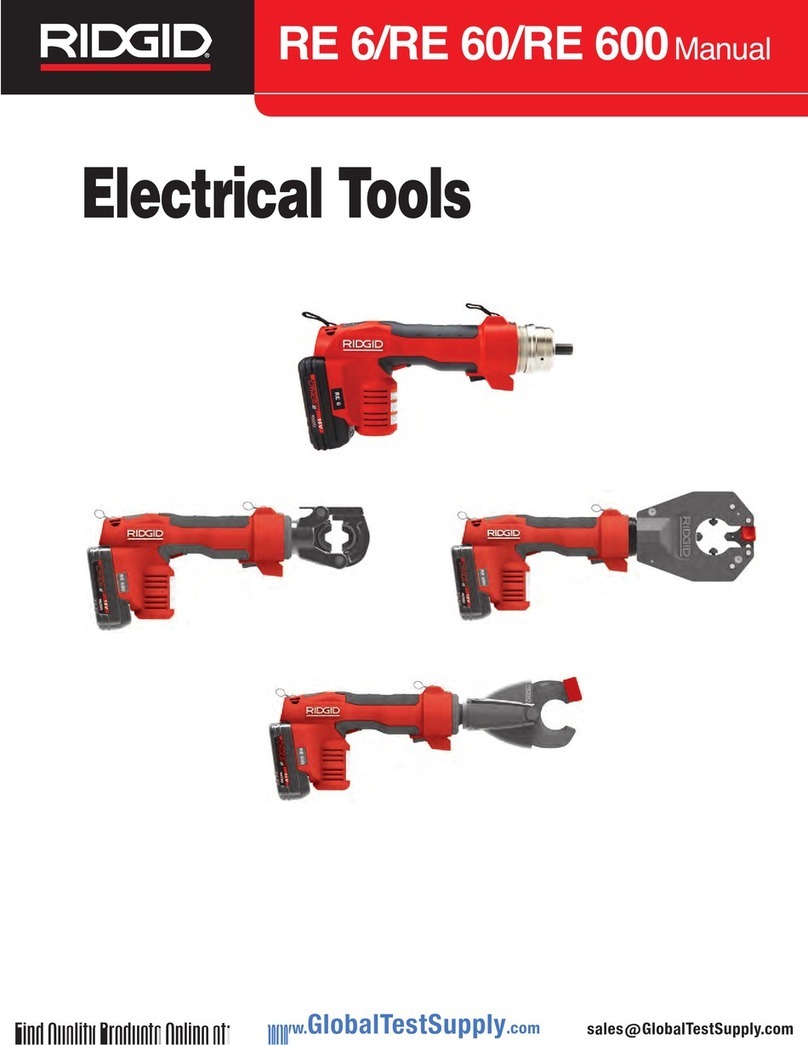
RIDGID
RIDGID RE 6 manual
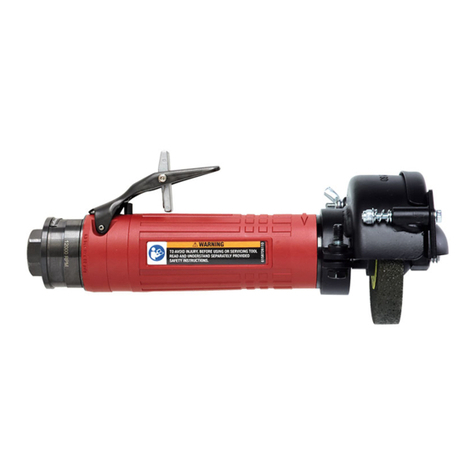
Chicago Pneumatic
Chicago Pneumatic CP3119-123X manual
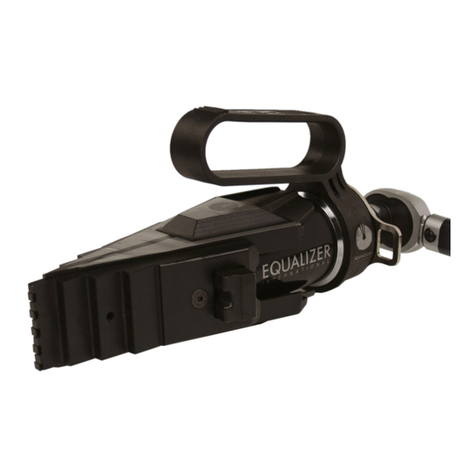
Equalizer International
Equalizer International SWi12/14TM Operator's instruction manual
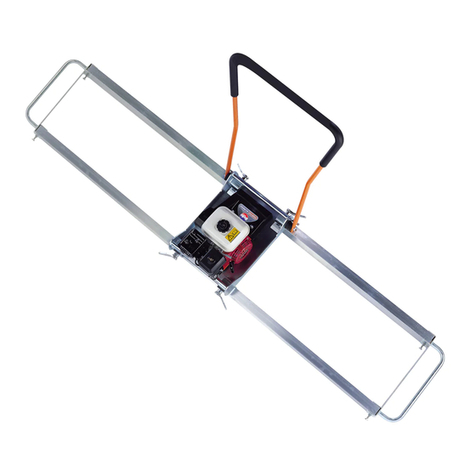
Altrad
Altrad BELLE PORTO SCREED Operator's manual
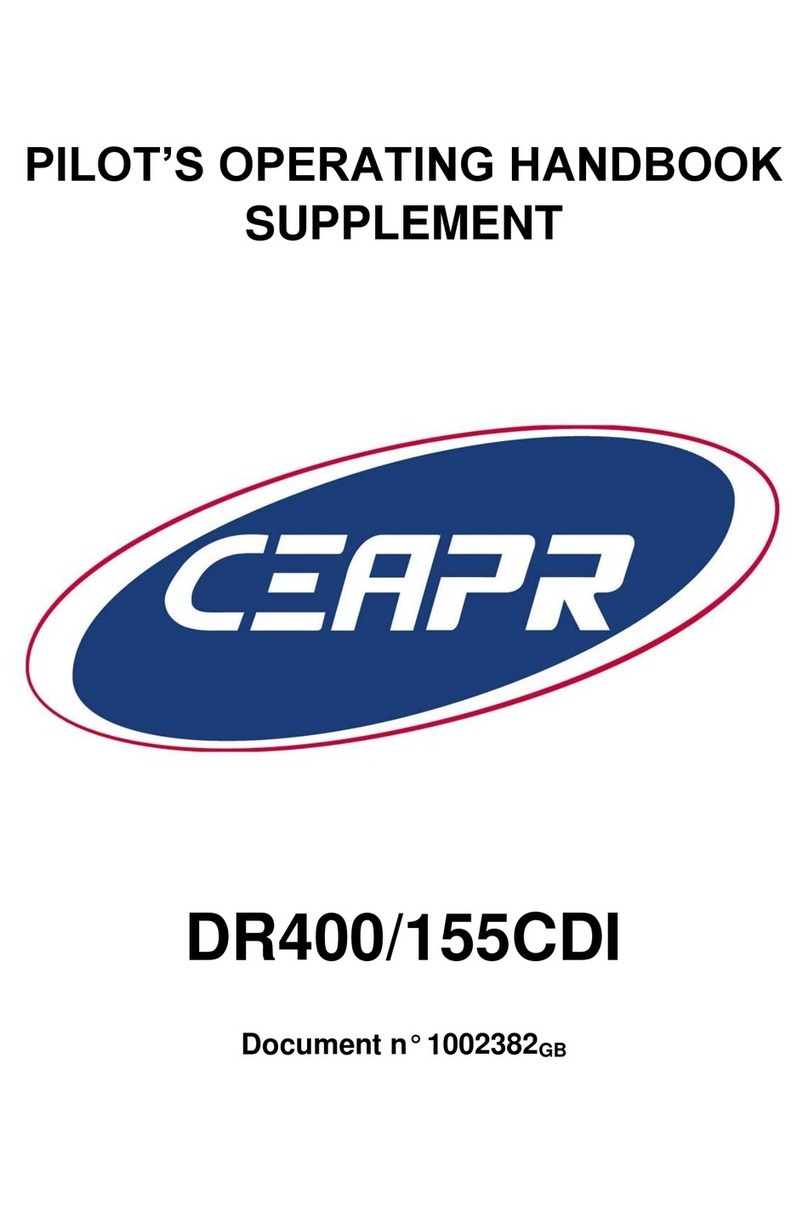
CEAPR
CEAPR DR400/120D Pilot's Operating Handbook Supplement
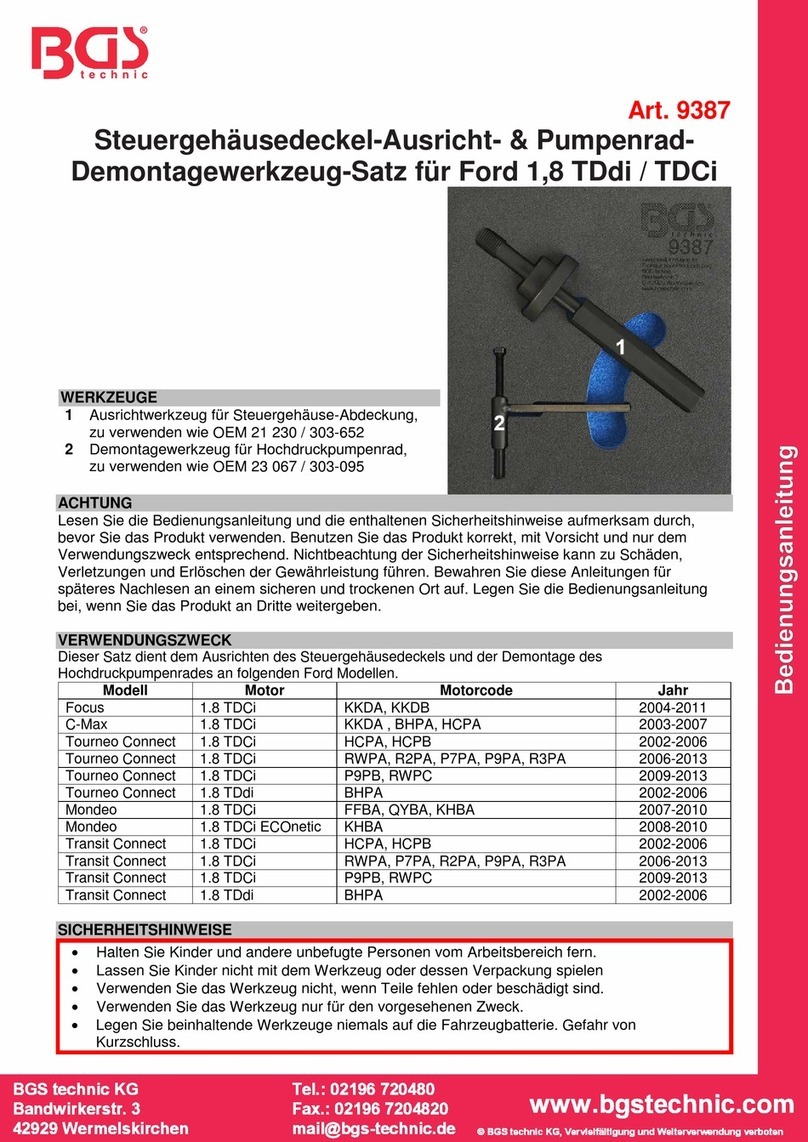
BGS technic
BGS technic 9387 instruction manual
